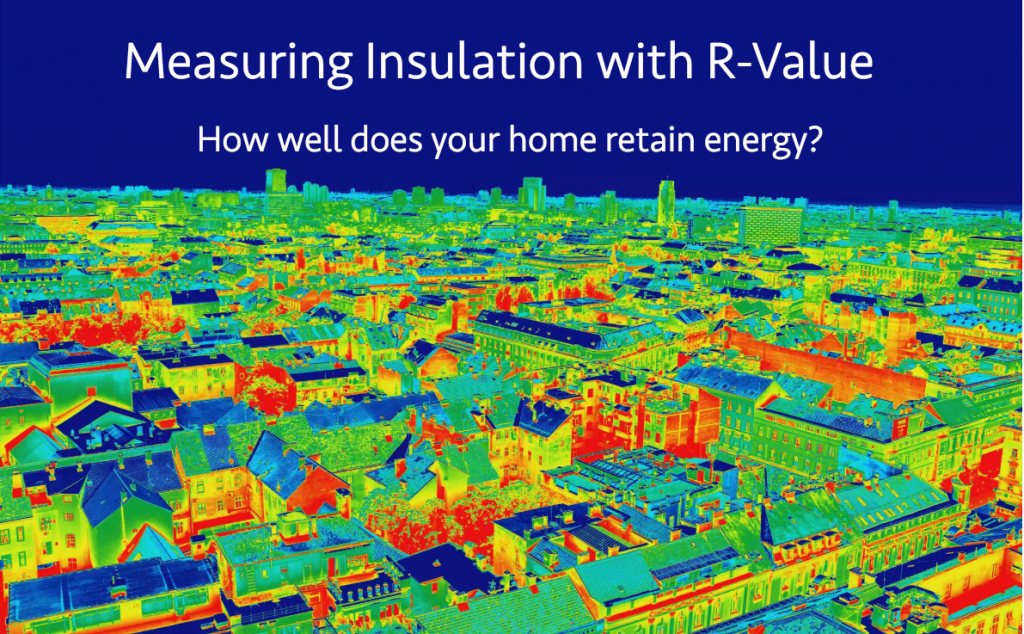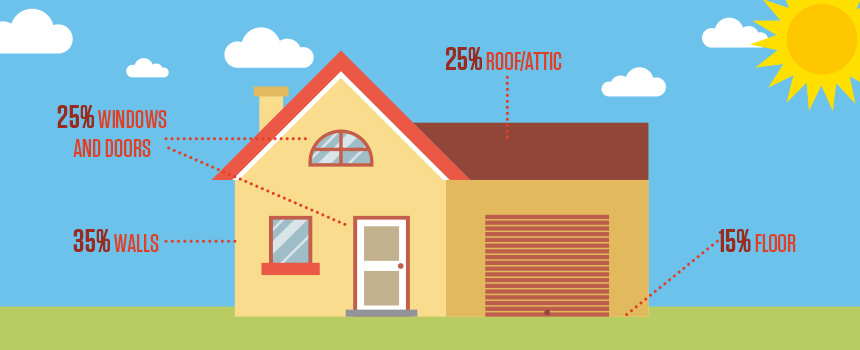
From R-ratings to R-Values, a letter of concern
For people ages 17 and under, an R rating represents a tantalizing reason to watch a movie. After all, a movie with such a classification may very well hold titillating, salacious, classified imagery the adult establishment keeps withholding from them, but for which they know they’re ready!As we get older and discover that all those movie ratings signify is that we get to sit through two hours of Adam Sandler talking about his posterior, the term “R rating” evolves to denote something far steamier – your home’s ability to retain warmth.
In the same way that cinematic R ratings hint at the presence of forbidden fruit for adolescents, your house’s R-rating is a measure of its ability to capture and retain the valuable energy for which you’ve paid! Read on to discover what exactly is an R-rating, why does it matter, and how can you improve the one for your home!
What is an R-rating?
In the context of home energy-efficiency, an R-rating – or R-value, as it’s also known – refers to an insulating material’s ability to resist conductive heat flow. The better a material resists the transfer of heat, the higher its R-value soars.
Factors That Determine R-value
Your insulation’s R-value is a function of several physical variables. These include:
The material from which the insulation was made
The temperature of where you live
Where the material is along the course of its lifespan
How much moisture it has accumulated.
Another important variable is the quality with which its installation was carried out. Even if you have a premium-grade insulation material applied to your house, if it’s incorrectly or sloppily installed, you won’t be able to fully reap its benefits.
This is why it’s important to designate the task of installing your home’s insulation to an experienced, reputable, top-tier insulation company such as Neeeco.
With decades of combined experience amongst our staff and a trail of thousands of satisfied customers in out wake, we’re the premiere insulation company in the state of Massachusetts, and we can guarantee our services will help you get the most out of whatever material you use to insulate your home.
How Can I Increase my Home’s R-Value?
There are several ways to increase the R-Value of your house. The first – and most intuitive – of these is to increase the thickness of your home’s insulation. As a general rule, your R-rating will surge proportionately to the amount of insulation you’ve installed. After all, the more barriers to escape that renegade heat encounters, the less likely it will be to able to take flight.One exception to this rule, however, occurs in the case of loose-fill insulation: As the thickness of installed loose-fill insulation goes up, its settled density increases as well due to the material being compressed under its own weight. As a result of this compression, the R-Value of loose-fill insulation does not always match its changes in thickness.How effective the insulation material you use is also varies based upon where and how it is installed. For example, material that is compressed will not render its maximum potential R-Value. Similarly, insulation placed on a wall or ceiling will provide a different level of effectiveness than material placed near joists, studs, and other building materials as these materials conduct heat more easily due to a phenomenon known as “Thermal Bridging.”Additionally, insulation run through building cavities can diminish the airflow through them and bring down levels of convective heat loss.
With the help of one of Neeeco’s expert insulation contractors, you can discover exactly how much loose-fill insulation is necessary to get your house to an optimal R-rating.
Losing Heat is Burning Money
Take a look at how much energy leaks from your home at the main sources of escape:

As climatized air escapes through the points of deficiency in your house’s insulation, it takes with it very real dollars and cents. The reason behind this is that failure to retain energy results in your heating and cooling systems having to work significantly harder to maintain the desired climatic conditions of your living space. While you could reduce your utility bills by resigning yourself and your family to miserable, survivalist conditions inside of the house throughout the winter and summer months, the easiest way to lower your utility costs is to have your home adequately insulated in order to diminish the strain on your heating and cooling systems.
This winter, the state forecasts cost increases ranging between 12-17% for oil and gas heating. By bolstering the R-Value of your house, you can offset some of these increases, as well as extend the lifespan of your appliances.
In the long term, having used your heating and cooling systems less ferociously will not only save you money on utility bills, but also spare you the inconvenience of having to repair or replace them.
What Type of Insulation Should I use to Raise my R-Value?
- The form of insulation with the highest R-Value is Vacuum Insulated Panels. Weighing in at an R-Value of R-45 per inch, they’re the reigning champs of energy efficiency.
- Aerogel, polyurethane, and phenolic foams are other popular and effective forms of insulation, though their ratings are slightly lower.
The Bottom Line
As R-Values go up, your costs go down! The time to prepare your home to handle the ravages of the winter is now: Insulate before it’s too late!
Call (781) 514-5882 or contact us to get started with a no-cost Mass Save® home energy assessment.
